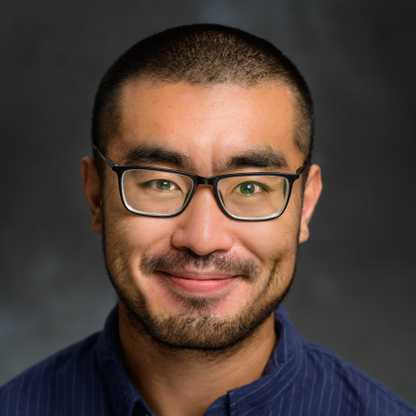Just Launched: ASAP Application for MSCS Students.
BECOME A SOFTWARE DEVELOPMENT LEADER
ONLINE MASTER’S IN COMPUTER SCIENCE (MSCS)
ONLINE MASTER’S IN COMPUTER SCIENCE PROGRAM
99% of Stevens MSCS graduates in the Class of 2023 accepted job offers within three months of graduating1
You don’t need a computer science background to earn a Stevens MSCS
Pivot to a computer science career with a Stevens online master’s in computer science
Gain technical depth with in-demand focus areas in AI and machine learning, business intelligence and analytics, or software development
1Based on data from 2023 full-time program graduates.
Apply Now
Ranked No. 1 in New Jersey for “Best Online Master’s in Computer Information Technology Programs” in 2024 by U.S. News & World Report.
ONLINE MASTER’S IN COMPUTER SCIENCE OVERVIEW
The Stevens Institute of Technology Master of Science in Computer Science (MSCS) offers a curriculum aligned with the latest labor market trends and sets students up for career success through relevant areas of focus including AI and machine learning, business intelligence and analytics, and software development. Computer science students take courses that foster technical proficiency in the leading industry tools, including:
Enterprise software design and engineering
Mobile application development and cloud computing
Agile development methods
Algorithm design and testing
Machine learning in support of providing software development leaders and high-quality coders
QUICK FACTS
TERM START DATE
FALL 2025: September 2, 2025
OVERVIEW
- 30 Credit Hours
- 10 Courses
- 100% Online
- 2 Years or Less Completion Time*
*Total time to complete the program may vary based on the number of credits taken each semester.
99%
EMPLOYMENT
99% of MSCS graduates in the Class of 2023 accepted job offers within three months of graduating.1
No. 1
IN N.J.
No. 1 in New Jersey for Best Online Master’s in Computer Information Technology Programs by U.S. News & World Report (2024).
7x
WINNER
Winner of the U.S. Distance Learning Association’s 21st Century Award for Best Practices in Distance Learning.
No. 13
IN THE NATION
Stevens was named one of the Top 20 U.S. Private Schools for Best Career Placement by The Princeton Review (2022).
No. 15
FOR BEST VALUE
Ranked No. 15 among “Best Value Colleges” by Payscale (2024).2
1 Based on data from 2023 full-time program graduates.
2 Based on the cost of a four-year bachelor’s degree program.
COMPUTER SCIENCE CAREER OUTLOOK
An MSCS qualifies students for advanced, well-compensated positions as computer science managers and individual contributors specializing in areas like software engineering, machine learning and database management. The U.S. Bureau of Labor Statistics (BLS) forecasts much faster than average growth for such computer science roles as:
- Software developers (25% growth in employment by 2032)
- Computer research scientists (23% growth in employment by 2032)1
The exceptional skill set MSCS graduates possess helps them secure premiere tech jobs as computer scientists at companies such as Google and Meta, which can pay around $300,000.2
Many remote work opportunities are available in computer science, but emerging tech hubs and traditional business hubs are also significant employers in the field. For instance, more than 119,000 software developers are employed in the New York City metropolitan area, where Stevens is located. Other popular cities, including San Francisco, San Jose and Seattle, are home to prominent businesses that hire many developers and offer average annual salaries between $164,000 and $199,000.3
Our diverse curriculum and specialized offerings equip students with the sought-after skills needed to thrive in their chosen fields. This degree prepares graduates with skills in computer science, Python, Amazon Web Services, automation and software engineering and opens doors to other organizations outside of tech, such as Bank of America and JPMorgan Chase, both of which have employed Stevens MSCS alumni.
1 U.S. Bureau of Labor Statistics, 2024.
2 Glassdoor, April 2024.
3 U.S. Bureau of Labor Statistics, 2024.
JOBS IN COMPUTER SCIENCE
Sources: Lightcast, 2024 and Glassdoor, 2024.
ONLINE MASTER’S IN COMPUTER SCIENCE COURSEWORK
“The curriculum with focus areas empowers students to tailor their education to align with their career aspirations and prepare them with in-demand skills.”
– Dr. Shudong Hao, MSCS Program Director
The MSCS program consists of 30 credit hours, with 10 courses, and is 100% online. Students will engage in Traditional or Advanced coursework on the following topics to develop skills as software development leaders and high-quality coders. Additionally, students can specialize their skills in sought-after areas of focus through coursework in AI and machine learning, business intelligence and analytics, and software development. Course availability and individual elective options are subject to change each semester.
We encourage students to work with their student coaches to develop a study plan and organize prerequisite coursework to complete their desired area of focus.
EARN YOUR COMPUTER SCIENCE MASTER’S ONLINE AT STEVENS
The Stevens Online MSCS program offers both traditional and advanced course sequences where students are taught by our renowned faculty and engage in coursework to develop skills as software development leaders and high-quality coders.
Demonstrated expertise in computer science is not a prerequisite to apply to the program — and many Stevens online students leverage their MSCS to pivot to computer science careers. The wide range of experience within the Stevens online MSCS student body, paired with the MSCS cohort model, which encourages strong peer-to-peer relationships, enables students to learn from each other and grow.
Since computer science is a rapidly evolving field, Stevens updates its online MSCS coursework frequently to keep pace with innovations in computer technology and prove directly applicable to today’s industry trends and needs. Stevens MSCS students acquire job-ready skills, whether they are coming to computer science from another STEM field or have years of software development experience. The exceptional quality and value of the Stevens MSCS program is reflected in the fact that 99% of our computer science graduates accept jobs within three months of graduation.
FREQUENTLY ASKED QUESTIONS
MSCS graduates qualify for some of the best computer science jobs available. In an era where artificial intelligence may change the future of work, computer science graduates are leading these efforts. MSCS holders enjoy high salaries, thoughtful and engaging challenges, and benefits like remote work. They also have unparalleled job security as more and more organizations seek digital solutions to their challenges.
Prepared by our tailored curriculum aligned with the latest labor market trends, computer science professionals can work in almost any industry — from emerging and innovative tech startups to old-school financial institutions, healthcare systems and automotive companies. Our areas of focus such as AI and machine learning, business intelligence and analytics, and software development prepare students to achieve their postgraduate aspirations in quickly-growing fields.
Yes. In addition to the fact that expert computer science professionals are in demand in almost every industry, computer science jobs are some of the highest-paying careers available. On average, a professional with a master’s degree in computer science can boost their lifetime earnings by over $900,000, easily covering their upfront costs for a degree.1 Demand for tech professionals with advanced coding skills also motivates some companies to offer tuition reimbursement, helping promising employees pay for an advanced degree.
1 Source: “Is Grad School Worth It? A Comprehensive Return on Investment Analysis” from FREOPP.org
Yes, computer science typically requires a strong foundation in mathematics. While no specific courses are required to apply, a bachelor’s degree with a minimum GPA of 3.0 from an accredited institution is required. Learn more about the admission requirements.
As a seven-time winner of the 21st Century Award for Best Practices in Distance Learning, Stevens Institute of Technology offers an exceptional student experience that mirrors the quality of our on-campus programs. With relevant courses, renowned faculty and personalized support, our programs ensure a rewarding academic journey. Benefit from a diverse cohort, direct faculty interaction and flexible study options tailored to your needs, providing you with an enriching and engaging learning environment that parallels the on-campus experience.
Financial aid and scholarship options for the online computer science program are available. Some employers offer tuition reimbursement to staff, and there may be additional financial aid opportunities available to students to support their education and prepare them for future leadership roles within their organizations.
ONLINE MSCS ACCREDITATION
Stevens Institute of Technology has been continually accredited by the Middle States Commission on Higher Education (MSCHE) since 1927. Stevens is accredited until 2027 and the next self-study evaluation is scheduled to take place during 2026-2027.
MSCS ALUMNI HAVE GONE ON TO BE EMPLOYED AT ORGANIZATIONS SUCH AS:
AMAZON
META
IBM
BANK OF AMERICA
JPMORGAN
FACULTY
Our faculty includes National Science Foundation (NSF) CAREER winners as well as researchers who consult for companies such as Microsoft, IBM, Google, Bell Labs and other top industry firms.

Shudong Hao

Reza Peyrovian

Patrick Hill

Dominic Duggan

Samuel Kim
PROGRAM ADMISSION REQUIREMENTS
BACHELOR’S DEGREE
Minimum GPA of 3.0 from an accredited institution. Degree required to begin the program; completion not required at time of application.
TWO LETTERS OF RECOMMENDATION
Faculty members and/or professional colleagues.
STATEMENT OF PURPOSE
Optional, but strongly recommended.
ACADEMIC TRANSCRIPTS
Applicants must submit transcripts from all undergraduate and graduate institutions where credit was earned. You may submit unofficial transcripts during the application process. After admission, you will be required to submit official transcripts.
TOEFL/IELTS/DUOLINGO SCORES
Required for international students.
RESUME
Optional, but strongly recommended.
Key Dates & Deadlines
Prospective students who apply by July 21, 2025, may qualify for up to $16K in tuition grants and scholarship funds.
*Applicants who apply by the early submit deadline and are admitted may be eligible for a $250 deposit waiver. Applicants who receive education assistance from employers or other tuition discounts are not eligible. Other eligibility conditions may apply.
TUITION*
$1,993
Per Credit (30 Credits)
$60
Application Fee
Fee waivers available
$250
Enrollment Deposit
*Tuition based on fall 2025 rates effective September 2025. Tuition and fees are subject to change annually. Additional program fees may apply.
UPCOMING EVENTS
Attendees will receive an application fee waiver.
ON DEMAND CONTENT
“When I looked at the StevensOnline MSCS program, I liked that it gave students more opportunities to explore different areas of computer science. We started with Java and data structure and built from there. I think it’s nice that the program teaches foundational skills you can use in many branches of computer science.”
Rojona Feliciano ’22
